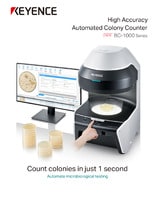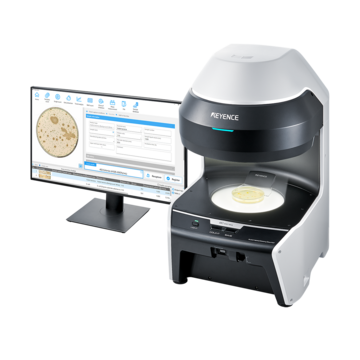Introduction to Microbiological Colony Counting
Microbiological colony counting is essential for quantifying the presence of viable microorganisms in a variety of samples. This method plays a crucial role in areas such as clinical diagnostics, pharmaceuticals, food safety, environmental monitoring, and biotechnology. By enabling scientists to estimate the concentration of microorganisms, colony counting provides critical data for understanding microbial populations, assessing contamination levels, and ensuring the safety and efficacy of products and processes.
What is Colony Counting?
Colony counting involves growing microorganisms on a solid nutrient medium, such as an agar plate, by spreading a diluted sample on the plate, incubating it to allow microorganisms to grow, and then counting the resulting colonies. Each visible colony is assumed to originate from a single viable microorganism or a cluster of microorganisms that have proliferated into a discernible mass. Researchers then use the number of colonies to calculate the number of colony-forming units (CFUs) per unit volume or weight of the original sample.
Discover more about this product.
Click here to book your demo.

A Brief History of Colony Counting
The concept of microorganisms dates back to the late 17th century when Antonie van Leeuwenhoek, a Dutch tradesman and scientist, first observed "animalcules" (microbes) using a simple microscope he had designed. However, it wasn't until the 19th century that microbiology began to take shape as a distinct scientific discipline.
Pioneers of Microbial Culturing
In the mid-19th century, French scientist Louis Pasteur conducted experiments that disproved the theory of spontaneous generation and demonstrated that microorganisms were responsible for fermentation and spoilage. His work laid the groundwork for the development of sterile techniques and microbial culturing.
German physician Robert Koch made significant contributions to microbiology by developing methods for isolating and growing pure cultures of bacteria. In 1881, Koch introduced the use of solid media, such as agar, to grow bacterial colonies. This innovation allowed for the separation and identification of individual bacterial species, a key step in understanding pathogenic microorganisms.
The Advent of Colony Counting
With the ability to grow microorganisms on solid media, scientists could now observe and count individual colonies. Early colony counting methods were rudimentary, relying on visual inspection and manual counting. Despite the simplicity, these methods provided invaluable insights into microbial populations and their behavior.
Standardization and Quantification
As microbiology advanced, the need for standardized methods became apparent. In the early 20th century, the development of serial dilution techniques and the introduction of the colony-forming unit (CFU) concept provided a more systematic approach to colony counting. CFUs allowed microbiologists to quantify viable microorganisms in a sample, making it possible to compare results across different studies and applications.
Technological Innovations
- Petri Dishes
- Named after German bacteriologist Julius Richard Petri, the Petri dish, invented in the late 19th century, became a staple in microbiological laboratories. Its design facilitated the growth and counting of microbial colonies on solid media.
- Early Counting Devices
- By the mid-20th century, simple mechanical devices, such as grid-printed colony counters, were developed to aid in manual counting. These tools helped reduce counting errors and improve efficiency.
- Modern Advancements
- High-resolution digital cameras and sophisticated software algorithms have given rise to automated colony counters that can count, capture photos, and provide audit trails. Even manual methods of counting have seen improvements with tools like digital counting pens and digital counters that emit sound and are pressure sensitive.
We’re here to provide you with more details.
Reach out today!

Applications of Colony Counting
- Clinical Diagnostics
- In healthcare settings, colony counting is used to diagnose infections by quantifying bacteria in patient samples such as urine, blood, or tissue swabs. This information helps clinicians determine the severity of an infection and guide appropriate treatment.
- Pharmaceutical
- There are numerous applications within the pharmaceutical industry for microbial testing, such as evaluating bioburden testing, sterility testing, preservative efficacy testing, and microbial limit testing to name a few.
- Food Safety
- The food industry relies on colony counting to ensure products are free from harmful levels of microorganisms. Regular monitoring helps prevent foodborne illnesses caused by pathogens like E. coli, salmonella, and listeria and ensures compliance with safety standards.
- Environmental Monitoring
- Environmental scientists use colony counting to assess microbial contamination in water, soil, and air. This is vital for maintaining public health and monitoring ecological changes.
- Biotechnological Research
- Researchers in biotechnology utilize colony counting to study microbial growth patterns, screen for genetically modified organisms, and evaluate the effectiveness of antimicrobial agents.
Colony Counting Methodology
The process of colony counting typically involves several key steps:
- 1. Sample Collection and Preparation: Samples must be collected aseptically to avoid contamination. Depending on the sample type, it may require dilution to ensure that the number of colonies on the plate is countable and within a statistically relevant range.
- 2. Plating: The prepared sample is spread evenly over the surface of an agar plate. Various techniques, such as the spread plate or pour plate method, can be employed to distribute the microorganisms.
- 3. Incubation: The plates are incubated under conditions suitable for the growth of the target microorganisms. This often involves specific temperatures, atmospheric conditions, and incubation times.
- 4. Counting: After incubation, colonies are counted manually or using automated colony counters. The CFU per milliliter or gram of the original sample is calculated based on the dilution factor and the number of colonies counted.
Factors Affecting Accuracy
The accuracy of colony counting can be influenced by several factors:
- Dilution Technique: Proper dilution is critical to avoid overcrowded plates that make counting difficult and lead to inaccurate results. Some of these techniques include serial dilution, spread plate method, pour plate method, membrane filtration, and the drop plate method.
- Uniform Spreading: Even distribution of the sample ensures that colonies are well-separated and easy to count. Differentiating colonies that overlap can be difficult and a source of error when counting.
- Incubation Conditions: Appropriate temperature, humidity, and time are essential for optimal microbial growth.
- Agar Media: The choice of agar and its nutrient composition must be suitable for the target microorganisms, as well as a variety of other factors such as agar thickness, sterility, moisture, concentration, etc.
Contact us to learn more about how our advanced technology can help take your business to the next level.
Contact Us
Colony Counting in a Nutshell
Microbiological colony counting is a key technique that gives us crucial data for various science and industry applications. By grasping its basics, history, and uses, professionals across different fields can effectively use colony counting to monitor and manage microbial populations. Understanding this technique is imperative for ensuring product safety, advancing scientific research, and safeguarding public health.
Whether you’re new to colony counting, looking to bring it in-house, have limited trained staff, or need to start digitizing your results for better traceability, having an automated colony counter can be essential.
Take a look at our detailed catalog for the BC-1000 Series Automated Colony Counter from KEYENCE to see why this is the most versatile and easy-to-use counter available. Just place a dish or plate on the stage, click a button, and in one second get accurate and repeatable results that can be exported as a report or directly imported into your LIMS. In addition to dishes or plates, several other types of sample media can be used, including 3M™ Petrifilm™ plates, CompactDry™ plates, Millipore Sigma™ MC-Media Pads™, and more.
Discover how you can transform the way you count and document colonies by downloading our BC-1000 Series Automated Colony Counter catalog.
Curious about our pricing?
Click here to find out more.





